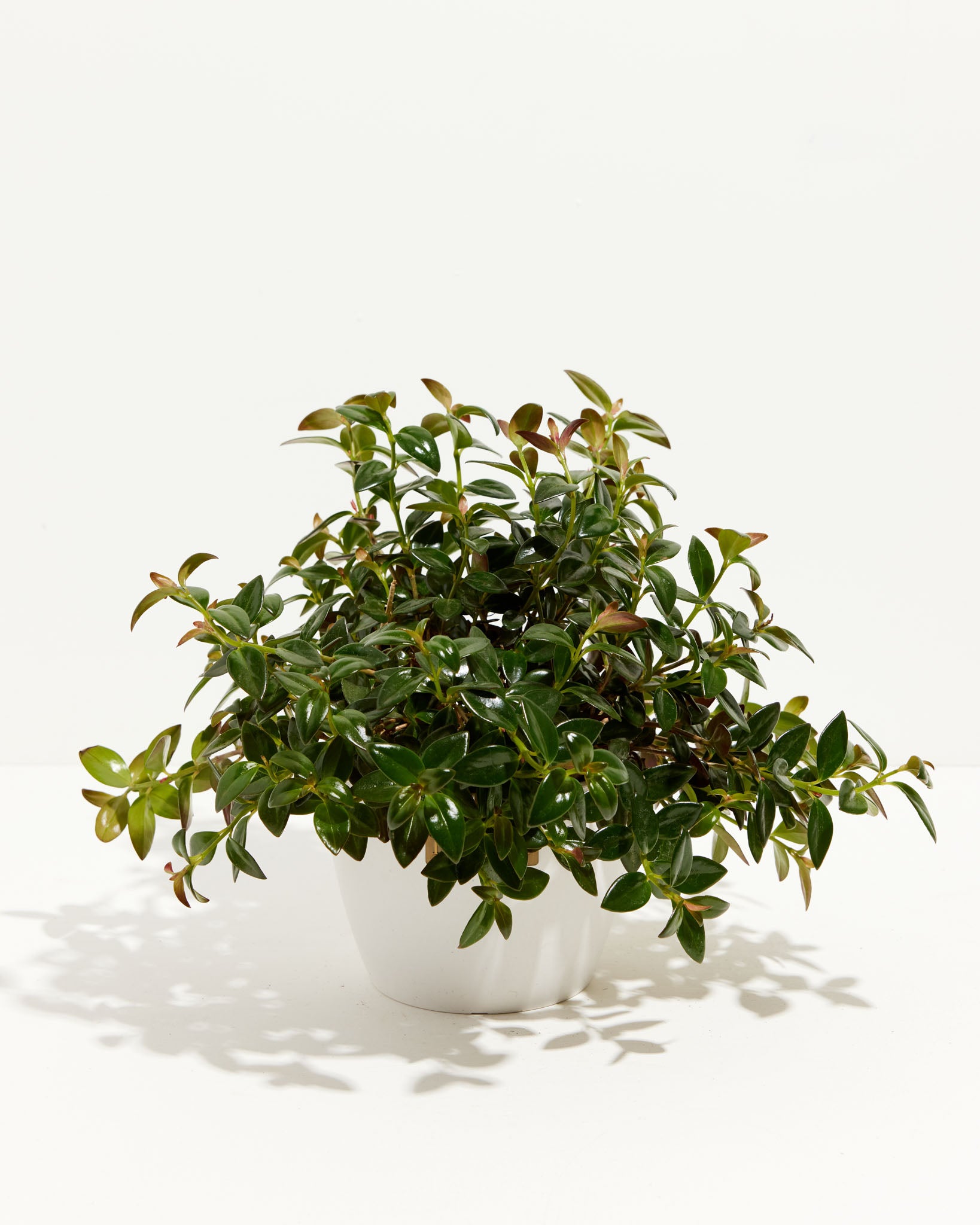

Nematanthus wettsteinii Care Guide

This plant prefers bright, indirect light to promote blooming!
Let the soil dry by 1/3 during the spring, summer and fall and less in the winter months unless its under grow lights.
Average humidity above 45% is optimum for this plant.
If winterizing indoors, average indoor temps are fine as long as he is close to a window getting direct light. He doesn't like temps below 55°F or he will protest or die.
If grown on a patio, make sure the leaves are sheltered from direct sunlight and extreme high temperatures.
Fertilize when watering twice a month in the spring and summer with a 1/2 strength water-soluable fertilizer high in phosphorus to encourage blooms.
When receiving the plant, do not repot immediately but wait at least 6-12 months or if the roots are beginning to get crowded and growing through the drainage holes. Repot in the spring, using a 2" bigger pot to keep the roots drier. Too big of a pot could cause the soil to dry slower, which is not helpful. Use a well-draining indoor potting mix with coir and perlite for good drainage. Water your plant in the old pot before transferring over and let it sit an hour. Place a piece of screening at the bottom of the container over the drainage hole to secure the soil and allow it to drain. Add soil to the bottom to elevate the root ball. Lift the plant and release the roots against the existing planter. Use a clean knife or garden trowel to wedge between the pot and the soil to loosen. Inspect the root ball. Notice if there are any dead or rotting roots and trim off with sterile pruners. If the plant is rootbound, cut through the roots to alleviate continued encircling. Ensure the plant is sitting about 1" below the edge of the pot to avoid water spillage. Add more soil and backfill around the sides by tamping down. Fill up to the soil line but not over. Water thoroughly, leaving the soil damp but not soggy. If settling occurs, add more soil.
Pruning this plant by half in the spring will promote new growth and keep it in shape.
Use sterilized pruners, remove 4-5 inches sections from the end of a stem (just below the node), and cut at an angle. Remove leaves from the lower part of the stem. Dip each branch in the rooting hormone to encourage root growth. Then place your cutting in a four-inch pot in a lightweight moist growing medium with perlite. Cover the potted plant loosely with a clear plastic bag to hold in humidity Set the baby cutting in warm, bright, indirect light for several weeks. Check moisture needs and don't let the medium get dry. After the stems have grown roots and anchored, you can remove the plastic bag and start fertilizing.
























